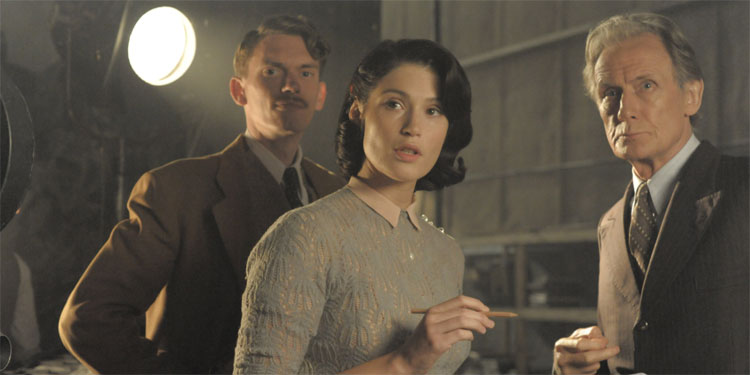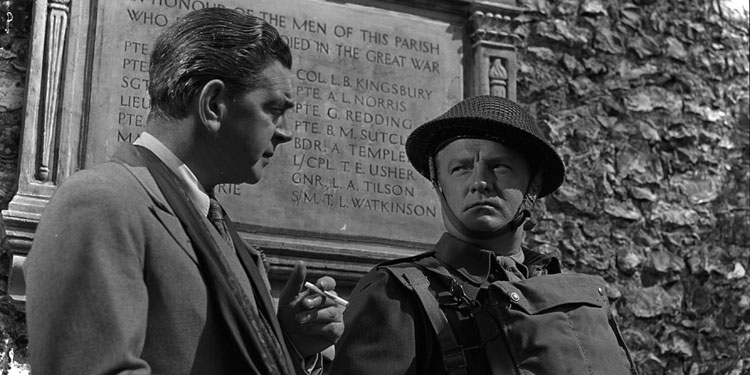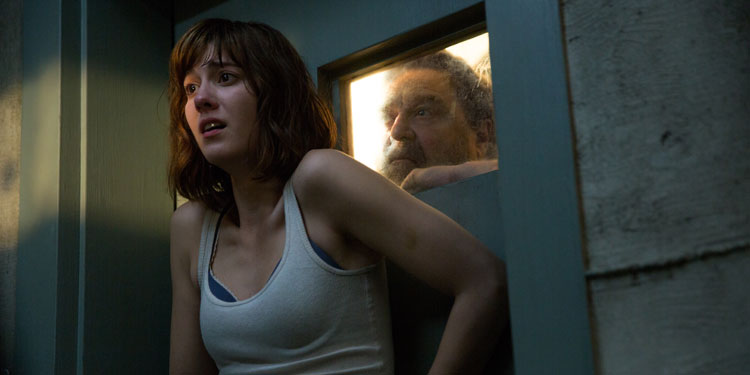 After war broke out in 1939, the British public was nervous. The enemy was only a few miles across the sea, and there was the fear of invasion. Hundreds of thousands of young men were being recruited and sent off to fight. Bombs were dropping on British cities and no one knew for sure what would happen. Things like TV and the internet weren’t available, so getting up to date information was far more difficult than it is today.
After war broke out in 1939, the British public was nervous. The enemy was only a few miles across the sea, and there was the fear of invasion. Hundreds of thousands of young men were being recruited and sent off to fight. Bombs were dropping on British cities and no one knew for sure what would happen. Things like TV and the internet weren’t available, so getting up to date information was far more difficult than it is today.
As a result, the British government wanted to provide as much information as it could, as well as to show people that it was a war that was worth fighting. To help with this, the authorities re-founded the Ministry Of Information (MOI) – the body whose innovative and informative poster campaigns during World War I had helped Britain to win. The MOI’s job wasn’t just to promote the British viewpoint and to help recruit young men into the military, but also to try and keep spirits high at home, and provide info on various government initiatives – from war bonds to keeping calm and carrying on – as well as offering people news from the front.
The new movie Their Finest, looks at a film crew trying to make a movie that will help boost morale during World War II, exploring the importance of cinema at the time, and how vital the power of storytelling became in Britain during the conflict.
In the film, Catrin (Gemma Arterton), an untried screenwriter, and a makeshift cast and crew, work under fire to make a film to lift the nation’s flagging spirits; and inspire America to join the war. Partnered alongside fellow screenwriter, Buckley (Sam Claflin) and eccentric actor Ambrose Hilliard (Bill Nighy), the trio set off to make a film that will warm the hearts of the nation and capture the imagination of the American population. Based on Lissa Evans’ novel, ‘Their Finest Hour and a Half’, is a witty, romantic and moving portrayal of a young woman finding her way, and her voice, in the mayhem of war… and the movies! Their Finest arrives in cinemas on April 21st.
This job of informing the public and keeping them on side was seen as so important during the Second World War that the Ministry Of Information was re-founded just one day after war was declared (it could be done so quickly because the British government had been planning for what would happen if war broke out, and had been preparing for the need for a large-scale information campaign since 1935).
This was a time when cinema had become perhaps the prime way people got their information. While radio was available, it hadn’t yet reached the central place in the nation’s psyche that cinema had at the time. Back then going to the movies wasn’t like today. Rather than just a single film, you’d get a whole programme, which included both a main film and a shorter ‘b’ movie, newsreels and possibly short documentaries and cartoons too. There was therefore plenty of opportunity to present powerful messages to the public, and from the moment war broke out the government was absolutely determined that as many of Britain’s 4,000 cinemas should stay open as possible, so that the public could stay informed.
At the time cinema really was a central part of British life. There were around 990 million cinema admissions in the year the war broke out, which means the average Britain went to the movies 20 times a year (compared to less than three times on average today). Many went at least once a week, and with ever-changing programmes, some went even more often. It meant that the MOI knew how vital film was to informing the public, not just in presenting news and documentaries about how Britain was doing the right thing, but also helping to produce fiction films that supported the war and attempted to keep British spirits high.
Due to the desire for information, watching films wasn’t limited to dedicated picture houses. Social clubs, pubs, village halls and other spaces became impromptu cinemas, often feeding off a diet of short documentaries and newsreels, rather than longer films, and the MOI provided them with much of the content.
As a result of this need for films that provided information and supported the war, the MOI engaged with the British film industry to help make movies that would build public morale, as well as getting filmmakers to see it as their duty to support the war effort. Alongside their work with the pre-existing British film industry, there was also the MOI controlled Crown Film Unit, which directly produced its own films for release to the public.
The result was quite a lot of suspense films, with the MOI particularly keen on movies that showed why the enemy forces needed to be fought and destroyed. Particularly in the early days, they were also aware that there was a fear of invasion, and so films were made to show that the British spirit would win out even if that happened. The most famous of these is probably 1942’s Went The Day Well, where a quiet English village is taken over by German paratroopers. However, it’s suggested that brave Brits would resist and that it won’t just be the Home Guard we’d have to rely on, but that everyday people would rise up, do their duty and fight off the Germans, in both big ways and small.

There were also plenty of films that suggested it was truly terrible living in Hitler’s Germany, reaffirming to the public exactly why we needed to fight them. That included movies such as 1943’s Tomorrow We Live, which sees the Germans turning from bumbling to brutal after the French Resistance manage to sabotage an armaments train. There was also Powell & Pressburger’s One of Our Aircraft Is Missing, about the bravery of Dutch civilians who help a group of downed British airmen, despite what they know will happen to them if the Germans find out.
Some of the movies only touched tangentially on the war, such as 1944’s Tawny Pipit, about a group of villagers trying to stop a field being ploughed because rare birds are nesting there. The government says the field needs to be cultivated as part of the war effort, but the villagers want to save the birds. Although on the surface it might be seen as anti-war to have villagers thinking birds are more important than using the field to grow crops to feed soldiers, the value of the movie was seen in how it showed the British love of their country, and that the essential things about the UK would survive the war because of the resilience and strength of the people.
However, the MOI could not pretend that everything was completely okay at home. For example, the public was well aware of the devastation caused to many cities by the Blitz, and rationing also meant food was not as abundant as it had once been. This resulted in an array of short documentaries, such as Battle Of London, which showed the horrific damage caused, followed by looks at how ordinary people had rallied together to survive the bombings, retain their British spirit and keep their morale high.
Throughout the war, the government, and Churchill in particular, felt these films were vitally important to the war effort. Without the continued support of the public, winning became much harder, and so a significant amount of effort was put into the release of a steady stream of films that supported the war, praised the public for their resilience and showed that it was a just fight. There was also support for more escapist fare, with the government knowing that amidst the fear of invasion, worries about loved ones fighting overseas and the terror of Blitzkrieg, sometimes people just needed something light to break the tension.
Over the course of the war, the Crown Film Unit alone produced just under 2,000 films, most of which were public information shorts, ranging from those encouraging people to Dig For Victory and to Make Do & Mend at home, to those extolling the efforts of the men on the frontline. Some of these films are praised even now for their artistry and galvanising effect, perhaps most famously Humphrey Jennings’ Listen to Britain, Fires Were Started and A Diary for Timothy, which helped make a beleaguered nation take pride in what was happening, despite the deprivations they were suffering. Indeed, it’s notable how often the Crown Film Unit’s productions concentrated on those left at home, trying to instil in them the sense that they were a vital part of the war effort, and that they should take pride in even the smallest things they were doing that would help Britain to win.

Alongside British made films, the government ensured suitable movies from overseas were imported and widely shown. That included the romantic war drama of Casablanca, and the rousing, seven-part Why We Fight series by Frank Capra, which Churchill personally insisted should be exhibited in as many places as possible to help instil a sense of pride in fighting the war.
It’s a strategy that worked, as despite the fact millions were recruited to fight, cinema attendance increased significantly during the war. Between 1939 and 1945 the number of cinema admissions rose by over a third to 1.5 billion a year. Movie houses were, even more so than newspapers, where people didn’t just get their information about how the war was going, but went to find solace and emotional release, as well as to get a sense that they were doing the right thing and that it would be worth it in the end. It is significant that the highest number of cinema admissions in British history came in 1946, just after the war ended, and dropped every year for the next four decades. It eventually plummeted by over 95% from mid-1940s levels, before recovering from the late 80s onwards. Even today, the number of cinema admissions is only 15% of what it was back then.
It is undoubtedly fascinating how the British government expended so much effort at home, keeping spirits up and ensuring the public stayed on side. It wasn’t just in the cinema either, resulting in unexpected things such as the fact fish and chips were one of the few foodstuffs that weren’t rationed. It was all in an effort to show that no matter what happened – Britishness would survive any effort to extinguish it, and that irrespective of the hardship, it was a just and necessary war.
Nowadays we tend to mainly remember those who went out and directly fought, so it’s easy to forget the importance of what was happening at home. Whether it was using the land to ensure the troops were fed, or asking the public to respect things such as rationing and blackouts, the war was not just won on the battlefield, but also by ensuring that everything that supplied that – including public support at home – kept going. Cinema was a vital part of that homefront battle. It may not have won the war on its own, but it certainly had its place in the fight, and for many people it was an invaluable source of both news and of hope.
Their Finest is in cinemas now.
 While it was so cold I’m expecting to come down with frostbite at any moment, we once more braved the chilly February London weather to cover the Red Carpet arrivals at this year’s EE BAFTAs Film Awards. It was a starry night at the Royal Albert Hall, with royalty there including Prince William and Meryl Streep (and yes, she is royal, I’ve decided).
While it was so cold I’m expecting to come down with frostbite at any moment, we once more braved the chilly February London weather to cover the Red Carpet arrivals at this year’s EE BAFTAs Film Awards. It was a starry night at the Royal Albert Hall, with royalty there including Prince William and Meryl Streep (and yes, she is royal, I’ve decided). For a long time artists have realised that claustrophobia is a powerful thing. If you can evoke the sense of being trapped in a confined space, you can put the audience in a state of tension, which you can then ratchet up and play with. It’s something used effectively in 10 Cloverfield Lane, which follows a woman, Michelle (Mary Elizabeth Winstead), who gets into a car accident after a fight with her boyfriend.
For a long time artists have realised that claustrophobia is a powerful thing. If you can evoke the sense of being trapped in a confined space, you can put the audience in a state of tension, which you can then ratchet up and play with. It’s something used effectively in 10 Cloverfield Lane, which follows a woman, Michelle (Mary Elizabeth Winstead), who gets into a car accident after a fight with her boyfriend. It’s happened to us all – you wake up on a spaceship in the middle of nowhere, and quickly discover that neither you nor the rest of the crew have any memory of who you are or how you got there. Ok, that hasn’t happened to any of us, but that’s where Syfy’s Dark Matter started out.
It’s happened to us all – you wake up on a spaceship in the middle of nowhere, and quickly discover that neither you nor the rest of the crew have any memory of who you are or how you got there. Ok, that hasn’t happened to any of us, but that’s where Syfy’s Dark Matter started out. Brought to you by the Watch Gallery
Brought to you by the Watch Gallery
 There is perhaps no genre in cinema for which music has been more important than horror. It’s a trend that continues with Green Room, the new movie from Blue Ruin director Jeremy Saulnier, which mixes together punk, neo-Nazis and edge of your seat thrills to create an acclaimed horror flick with music at its core.
There is perhaps no genre in cinema for which music has been more important than horror. It’s a trend that continues with Green Room, the new movie from Blue Ruin director Jeremy Saulnier, which mixes together punk, neo-Nazis and edge of your seat thrills to create an acclaimed horror flick with music at its core.
You must be logged in to post a comment.